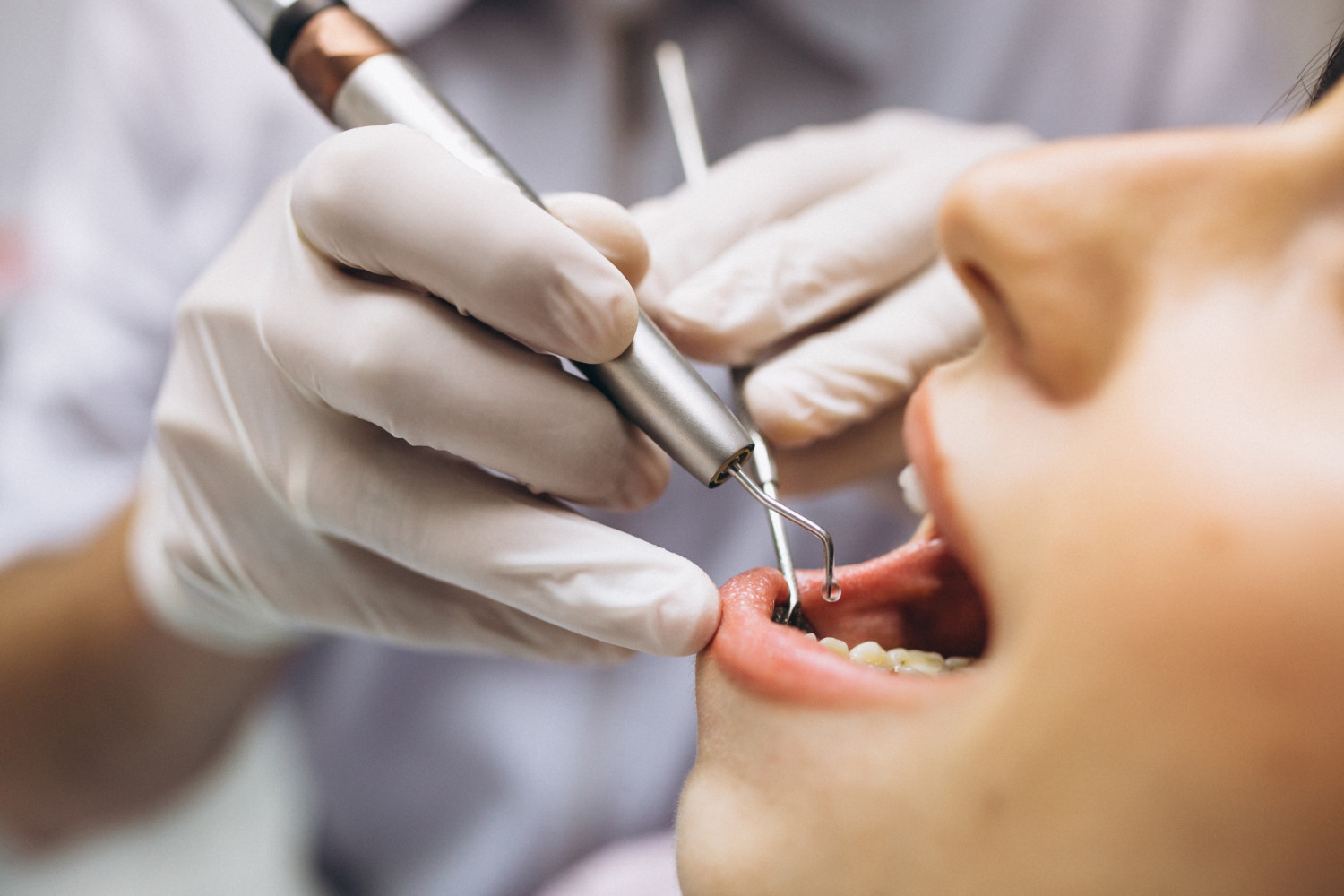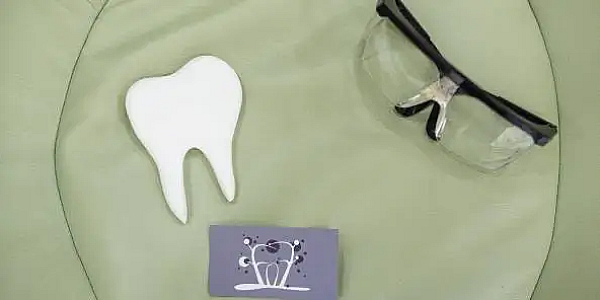A dental abscess is a collection of fluid that develops within a tissue in the jaw or gingival area, a form of dental infection that occurs when bacteria invade the deep structures of the tooth or gum. Deep decay, dental trauma, and poor oral hygiene are factors that favor the appearance of a dental abscess. If left untreated, the purulent collection located at the dental level can cause numerous complications and unpleasant symptoms. Anyone who experiences severe tooth pain and notices significant inflammation should see a dentist before experiencing other symptoms, such as fever or difficulty chewing.
What is a dental abscess
A dental abscess defines an area with pus accumulated at the level of the tooth root or in the periodontal tissues. Specialists in oro-maxillofacial pathology attribute its appearance to bacterial colonization, starting from deep decay, dental microcracks, or traumatic injuries that leave the nerve exposed. Bacteria can migrate from the oral cavity to the pulp of the tooth, and the immune system reacts by forming an inflammatory focus. Tooth infection can be recognized by spontaneous and intense pain, accentuated when touching the tooth or when in contact with cold or hot foods.
Types of dental abscesses
A dental abscess can be classified according to its location and the anatomical structures involved. The first group includes lesions located at the gingival level, in the space between the tooth and the soft tissues. The second category includes abscesses associated with the supporting ligaments and bone, called periodontal. The third form, the periapical abscess, is found at the tip of the root and is often caused by deep caries or fractures that expose the pulp to pathogens. Manifestations can be similar, such as pain, redness, purulent secretion and discomfort when chewing, but the treatment varies.
Gingival abscess
Gingival abscess indicates a purulent collection that affects the superficial layer of the gum and generates redness, swelling and a sensation of local pressure. A triggering factor is the accumulation of bacterial plaque, which causes small areas of inflammation at the edge of the gum. Food debris and tartar worsen the condition, favoring infection in the gum. The patient may report an unpleasant taste, and sometimes pus appears on the gum in the form of a punctate opening. The dental consultation reveals the stage of the infection and locates the possible tooth involved.
Periodontal abscess
A periodontal abscess involves the supporting structures of the tooth, including the periodontal ligament and the alveolar bone. Bacterial colonies develop in areas where the gum is detached from the surface of the tooth root and generate marked discomfort and a high potential for loss of tooth stability. Some patients may notice a pocket of pus at the tooth level, bleeding when brushing and a metallic taste in the mouth.
Periapical abscess
A periapical abscess occurs at the tip of the tooth root, following the penetration of bacteria into the pulp chamber through extensive caries or cracks. The dental pulp becomes inflamed and necrotic, and the body tries to delimit the infection in the periapical space. A periapical abscess manifests itself as throbbing, intense and persistent pain, which may radiate to the ear or throat. Sometimes, the patient feels a pressure that gives the sensation of an elongated tooth. Spontaneous drainage can occur if the bone or gum structures give way. However, the drainage of pus through a sinus canal does not mean the problem is solved, because the source of the infected root remains active. Treatment usually involves endodontic therapy, along with the administration of antibiotics for dental abscess, only if the doctor assesses the need. Extraction is considered only when the tooth can no longer be saved.
Why does a tooth abscess occur – Causes
Factors that lead to the development of a tooth abscess include deep cavities, tooth fractures, untreated gingivitis, and a number of individual characteristics. Damaged tooth enamel allows bacteria to enter the inner areas of the tooth, and infection develops when microorganisms multiply uncontrollably. Poor hygiene and excessive sugar consumption increase oral acidity, causing the enamel to thin, thus increasing the predisposition to microbial infiltration.

Symptoms of a dental abscess
A dental abscess generates clinical signs that cannot be ignored. Intense, throbbing or sharp pain, which worsens when touching the tooth or eating sweet or hot foods, is a main signal. Dental discomfort is sometimes accompanied by edema in the affected area, swelling being observed on the face. If the infection reaches the surrounding tissues, fever may set in, and regional lymph nodes become tender.
How to diagnose a dental abscess
The dentist evaluates the surface of the tooth and gum, observes the presence of a purulent collection and uses instruments to check for tenderness to the touch. A periapical x-ray may reveal dark areas, a sign of bone destruction, which indicates the location of the abscess. In some cases, a panoramic x-ray is used to provide an overall image of the jaws and all teeth. Differential diagnosis distinguishes between dental abscess and other pathologies, such as cysts or odontogenic tumors. After confirmation, a therapeutic plan adapted to the severity is developed, which may include drainage, endodontic treatment or even extraction.
A visit to the dentist is encouraged if any sign of pus appears in the tooth or for acute dental pain. Rapid presence at the office helps to promptly manage the inflammation and prevents possible aggravations.

Dental abscess treatment
Caring for a dental abscess involves procedures designed to eliminate the infection and reduce pain. The first stage consists of drainage, a solution that removes pus and reduces pressure in the affected area. The doctor can perform endodontic treatment, cleaning and obturation of the root canals, in order to block recontamination. Depending on the sensitivity of the pathogens and the patient's general condition, antibiotics may be prescribed. Analgesics and anti-inflammatories for dental infections can complete the treatment regimen. If the stage of the infection is advanced and the structure of the tooth has suffered irreparable damage, extraction is considered.
Surgical treatment for dental abscess
Surgical intervention is recommended in situations with severe evolution or when conservative methods do not provide healing. The surgeon incises the swollen area and the drain created allows the evacuation of purulent fluid. If the involved tooth has irreparable damage, extraction is resorted to, preventing the spread of the infection. Apical resection, a procedure that removes the tip of the root and the inflamed area, may also be performed.
Medications for dental abscess
Medication is intended to control the infection and reduce pain. Antibiotics are used for dental infections when there is a risk of systemic spread, signs of fever, or extensive swelling. The list of antibiotics for teeth includes broad-spectrum substances, such as amoxicillin or clindamycin, but the decision is up to the doctor after clinical evaluation. The patient should not administer antibiotics at random, as uncontrolled exposure leads to microbial resistance and may have other undesirable consequences. Anti-inflammatories are also used to reduce edema and pain, often supporting recovery. However, a correct attitude involves drainage and endodontic or surgical therapy.
Dental abscess treatment at home
Self-care methods at home can alleviate certain symptoms, but cannot completely eliminate the pathological process. Some patients use salt water for pus in the tooth, as the saline solution temporarily reduces inflammation and helps with cleaning. Infusions of plants with soothing properties, such as chamomile, can reduce the feeling of discomfort in the short term. Specialists recommend not to resort exclusively to home methods, as professional drainage and endodontic or surgical treatment remain the fundamental pillars for healing. Any attempt to squeeze the purulent bag at home can worsen the inflammation and cause bacterial dissemination.
How long does a dental abscess take to heal?
The duration of healing of a dental abscess depends on the depth of the infection, the body's ability to react and the speed of the dental intervention. If the patient receives immediate treatment for the dental infection, improvement of symptoms occurs shortly, especially after drainage and initiation of antibiotic therapy.
Typically, significant improvements are observed within the first 48 hours of starting a dental antibiotic, provided that the bacterial agent is sensitive to the chosen substance. How long the antibiotic takes to work in the tooth depends on the pharmacokinetics of the drug and the degree of resistance of the microflora. Factors that delay healing are low immunity, systemic diseases, or the persistence of an unresolved local source, such as a root fracture or an improperly filled cavity.
Dental abscess in children
In children, a dental abscess requires special attention, because the temporary tooth structure influences the development of future permanent teeth. Dental abscess in children can occur in milk teeth that have extensive cavities or in those that have suffered trauma. Children sometimes show symptoms such as fever, agitation, and refusal to eat, because the pain makes chewing difficult. Some signs include local swelling and hyperesthesia when touching the area. Parents should not wait for spontaneous remission, as the infection may progress.
How to Prevent a Tooth Abscess
Preventing a tooth abscess involves maintaining good oral hygiene and regular dental checkups. Brushing twice a day with a fluoride toothpaste removes plaque and food debris, which reduces the risk of cavities, the main risk factor for a tooth abscess. People who discover a cavity or crack in their teeth should see a dentist immediately to avoid progression to a tooth infection. It is also important to have your dental work evaluated regularly, as an ill-fitting filling can lead to microbial infiltration.
Frequently asked questions about dental abscess

Dr. Ciprian Calciu answers questions:

